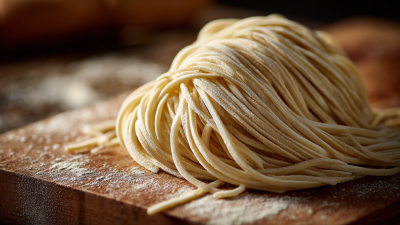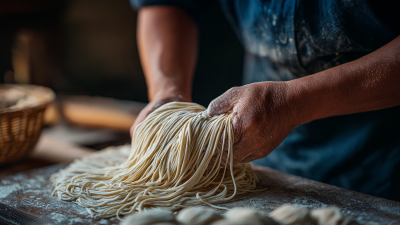
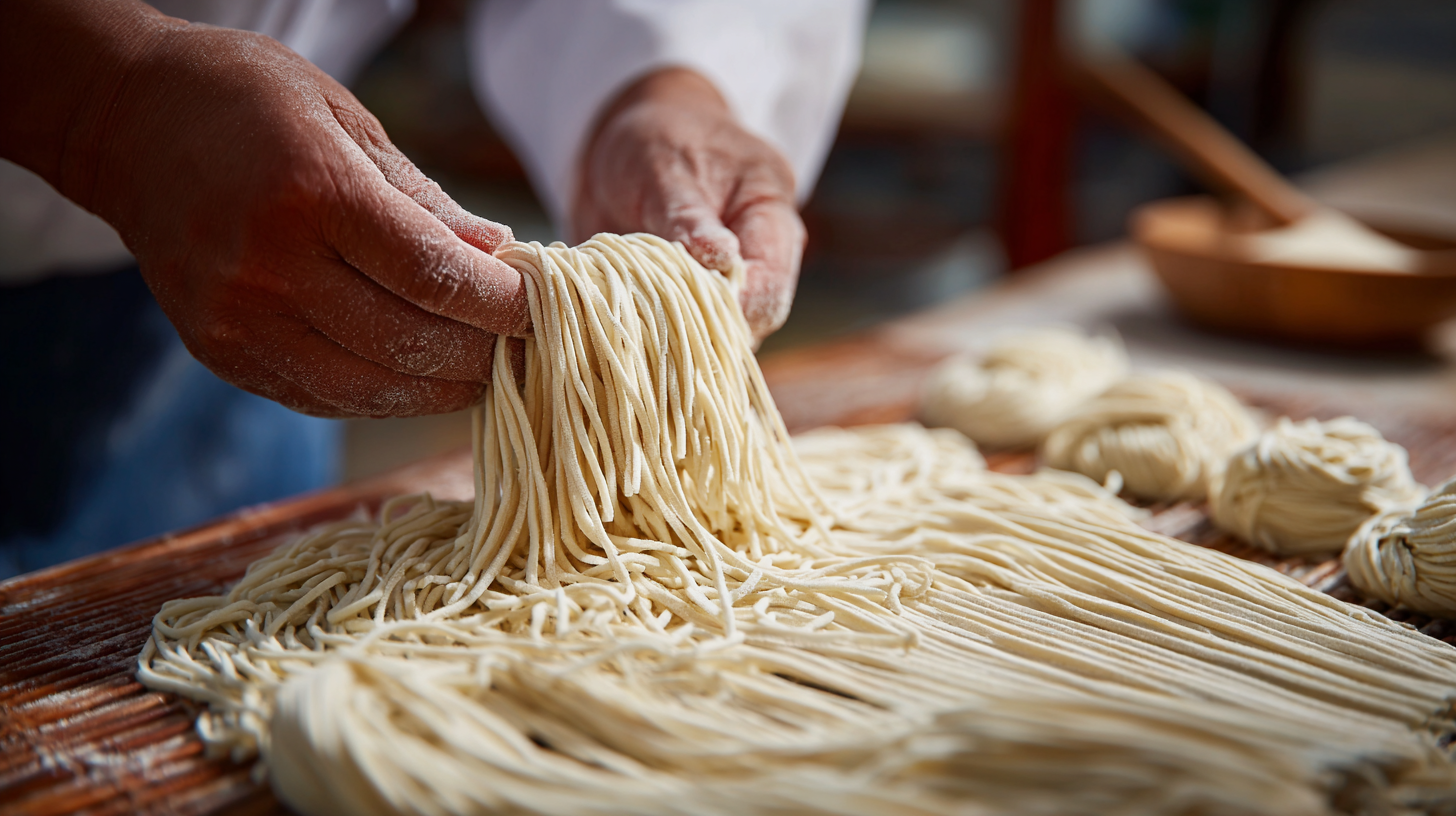 Hand Pulled Noodles are a remarkable testament to culinary craftsmanship, embodying both tradition and innovation in the world of gastronomy. With a history that spans centuries, these noodles are celebrated not only for their unique texture and flavor but also for the skill and artistry required in their preparation.
According to a report by the International Culinary Institute, the global pasta market is projected to reach approximately $100 billion by 2025, with a significant demand for artisanal varieties like Hand Pulled Noodles.
This surge reflects a growing consumer preference for authentic, culturally significant foods over mass-produced alternatives. As chefs and food enthusiasts alike delve into the art of making Hand Pulled Noodles, they not only enhance their culinary repertoire but also preserve a crucial aspect of heritage cuisine, making it more relevant in today's diverse food landscape.
Hand Pulled Noodles are a remarkable testament to culinary craftsmanship, embodying both tradition and innovation in the world of gastronomy. With a history that spans centuries, these noodles are celebrated not only for their unique texture and flavor but also for the skill and artistry required in their preparation.
According to a report by the International Culinary Institute, the global pasta market is projected to reach approximately $100 billion by 2025, with a significant demand for artisanal varieties like Hand Pulled Noodles.
This surge reflects a growing consumer preference for authentic, culturally significant foods over mass-produced alternatives. As chefs and food enthusiasts alike delve into the art of making Hand Pulled Noodles, they not only enhance their culinary repertoire but also preserve a crucial aspect of heritage cuisine, making it more relevant in today's diverse food landscape.
Hand-pulled noodles, known for their unique texture and flavor, are more than just a staple food; they embody a rich cultural heritage rooted in tradition. Originating in China, these noodles have been crafted by skilled artisans for centuries, with each pull and twist representing a connection to history and family. The process of hand pulling is not merely a cooking technique; it is a form of artistry that reflects a deep understanding of the ingredients and the love of culinary craftsmanship. This method, passed down through generations, showcases the pride and identity of the communities that cherish it.
The cultural significance of hand-pulled noodles extends beyond their preparation. In many regions, these noodles are a central element in festive celebrations and gatherings, symbolizing unity and prosperity. They are often served during family reunions and special occasions, representing the intertwining of lives and stories. Furthermore, as global interest in authentic cuisines rises, hand-pulled noodles are becoming a symbol of cultural exchange, allowing people from diverse backgrounds to appreciate the history and flavor they carry. This culinary journey not only tantalizes the taste buds but also fosters a deeper appreciation for the cultural narratives that noodles encapsulate.
Creating perfect hand-pulled noodles is an art that hinges significantly on the choice of essential ingredients. The foundation of these noodles lies in high-quality flour, specifically bread flour, which contains a higher protein content that aids in gluten development. This gluten is crucial for achieving the desired chewy texture. When selecting flour, opting for a finely milled product ensures a smooth, elastic dough that can be pulled without tearing.
Additionally, water quality plays a vital role in the noodle-making process. Pure, filtered water is preferable, as it impacts the overall taste and texture of the noodles. The perfect balance of water and flour leads to a dough that is neither too sticky nor too dry. For added depth of flavor, some chefs incorporate a pinch of salt into the dough, enhancing the taste and contributing to the overall satisfaction of the dish. With these essential ingredients properly selected and combined, the journey of making hand-pulled noodles becomes an enjoyable and rewarding culinary adventure.
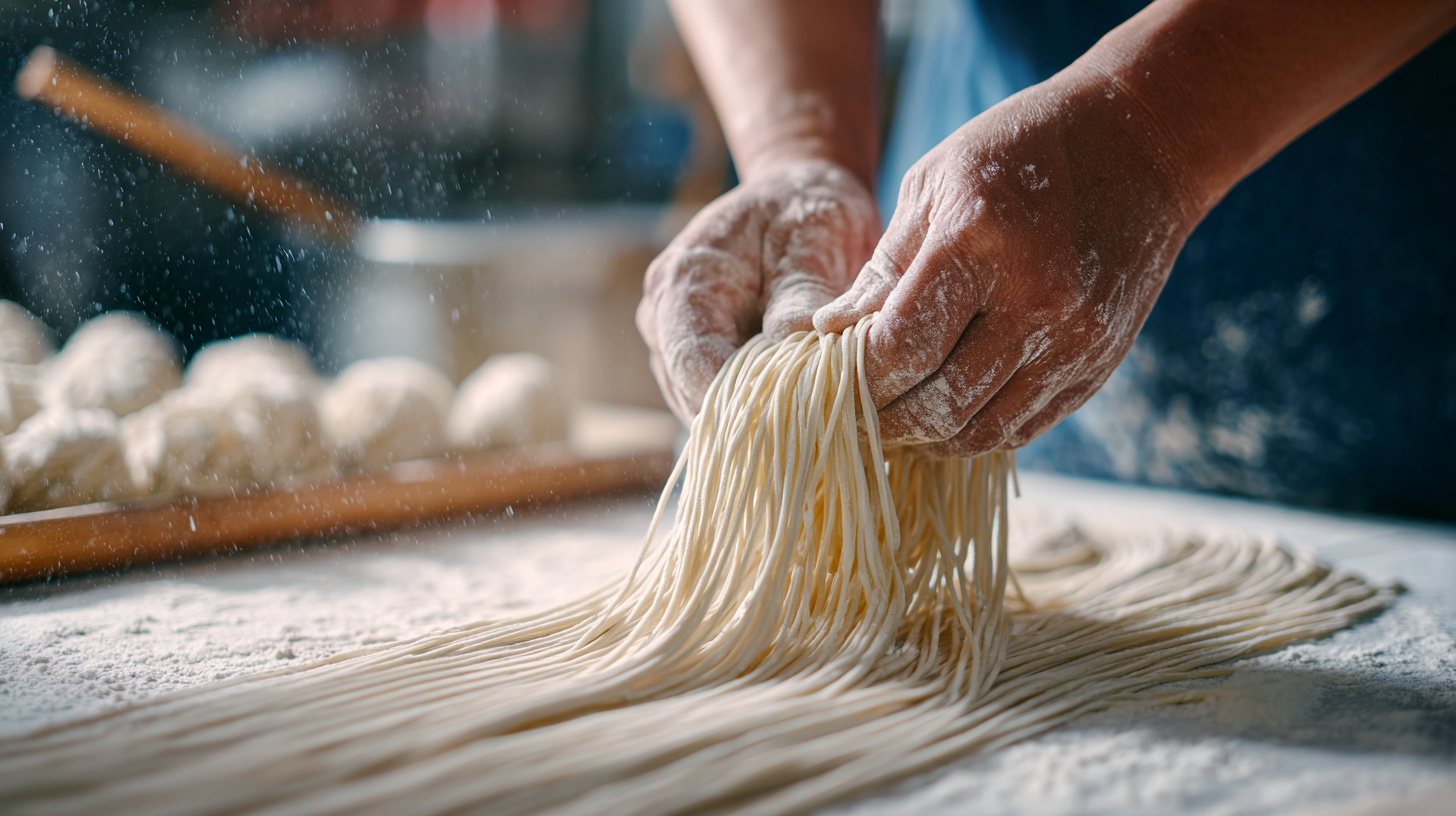
Hand-pulled noodles are a cherished tradition in various Asian cuisines, celebrated for their unique texture and flavor. Mastering the hand-pulling technique can transform a simple meal into a culinary masterpiece. This step-by-step guide will walk you through the essential stages of crafting these delightful noodles from scratch.
To begin, prepare a dough using flour and water, kneading it until it reaches a smooth consistency. Once the dough has rested, divide it into equal portions. The key to achieving the perfect noodle lies in the pulling process. Start by gently stretching the dough and then folding it back on itself. Repeat this action, gradually elongating and thinning the strands. This method not only creates the desired texture but also enhances the chewy quality that characterizes hand-pulled noodles.
As you progress, remember that practice makes perfect. Experiment with different thicknesses and lengths to tailor the noodles to your personal taste. Once cooked, these noodles can be enjoyed in soups, stir-fries, or any dish that craves a delightful base. Embrace the art of hand-pulling, and you'll find that the journey is as rewarding as the flavorful outcome.
This chart illustrates the key factors influencing the texture of hand-pulled noodles, rated on a scale from 1 to 10. Each factor plays a crucial role in achieving the perfect noodle consistency, with 'Pulling Technique' being the most influential.
Hand-pulled noodles, known as "la mian" in Chinese, have captured the hearts and palates of culinary enthusiasts worldwide. These noodles are celebrated for their unique texture and the artistry involved in their creation. There are several popular variations, each reflecting regional flavors and traditions. For instance, the Lanzhou beef noodles, originating from Gansu province, are served with a rich, clear broth topped with tender beef slices, fresh cilantro, and chili oil, showcasing a perfect balance between spiciness and umami. This dish highlights the beauty of hand-pulled noodles, as they absorb the flavors of the broth, creating a delightful culinary experience.
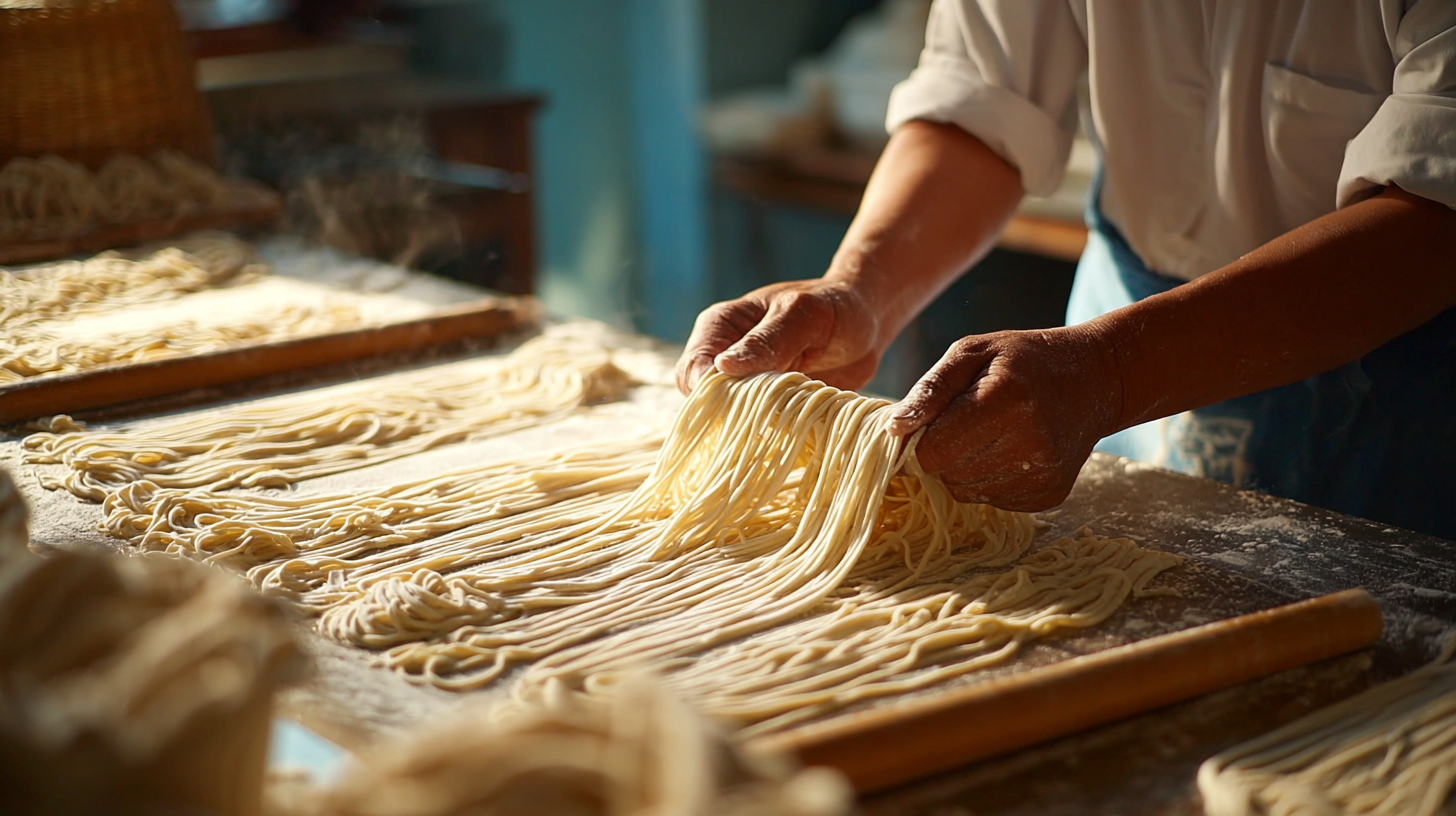
Another noteworthy variation is the Shanxi vinegar noodles, which emphasize the use of aged vinegar to add a zesty and tangy flair. Typically, these noodles are tossed with a mixture of garlic, sesame oil, and soy sauce, giving them a robust and refreshing taste. The interplay of these flavors enhances the chewy texture of the hand-pulled noodles, making it a favorite among those who appreciate a more acidic profile in their meals. Each variation not only celebrates the skill of noodle pulling but also the cultural significance behind the recipes, weaving together tradition, taste, and community in every delicious bite.
Hand-pulled noodles, known for their unique texture and flavor, are a staple in many traditional cuisines, particularly in Chinese gastronomy. When paired with traditional sauces and broths, these noodles transform into a delightful culinary experience. According to a report by the National Restaurant Association, noodle dishes have seen a surge in popularity, with a 20% increase in menu offerings in the last five years, highlighting their versatility and appeal across diverse demographics.
The pairing of hand-pulled noodles with rich, savory broths can elevate your meal to new heights. For example, a traditional beef broth infused with star anise and ginger perfectly complements the chewy texture of the noodles, creating a satisfying balance of flavors. Similarly, a Sichuan sauce, with its unique combination of garlic, soy sauce, and chili oil, can add a fiery kick that enhances the overall dish. These pairings not only honor the culinary traditions but also cater to modern palates seeking robust flavors.
Tips: When preparing hand-pulled noodles, ensure that your dough is well-kneaded and rested to achieve the perfect elasticity for pulling. Additionally, don’t shy away from experimenting with different combinations of sauces and broths to find the perfect match for your noodle dish. Remember, the right pairing can significantly enhance the dining experience!


